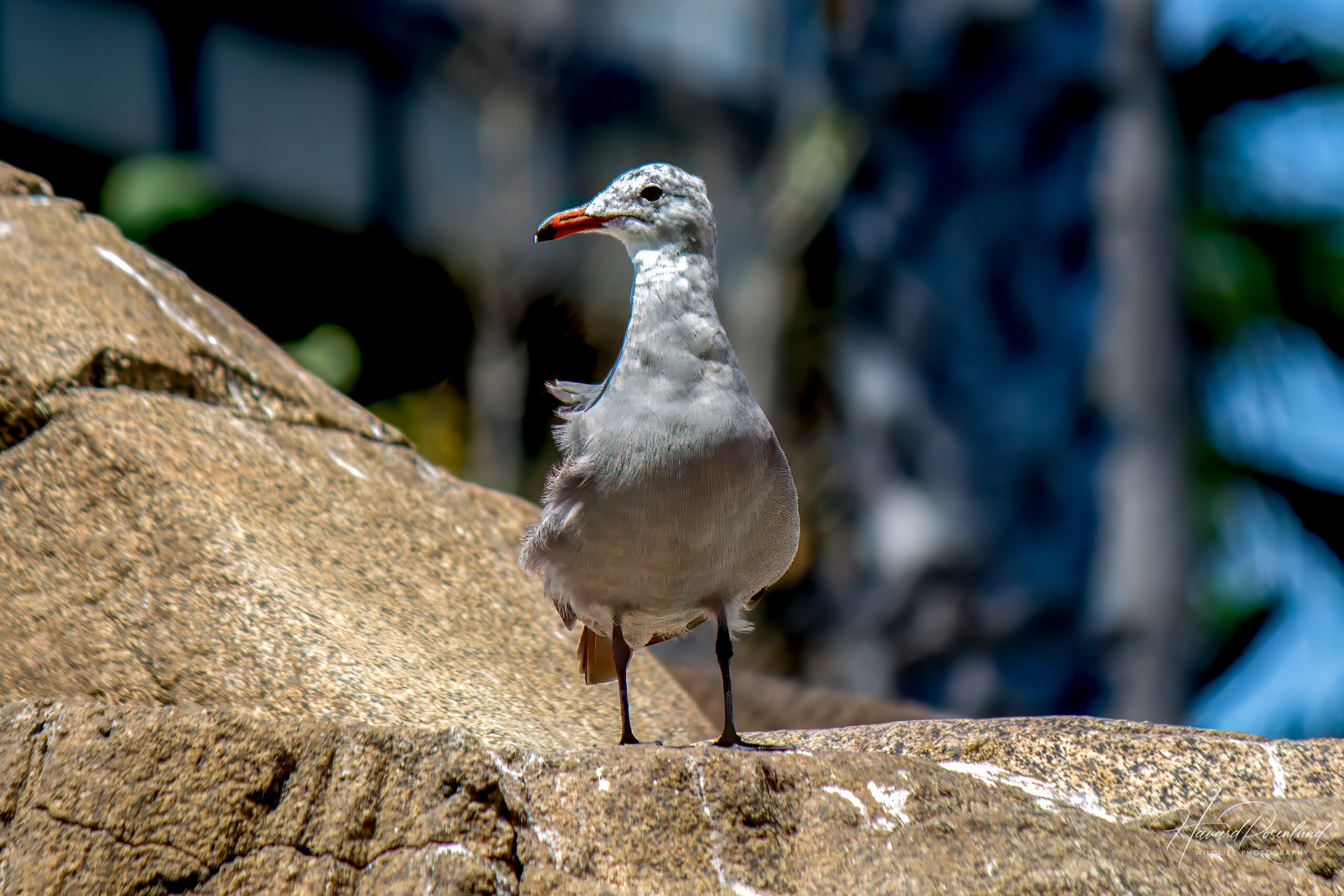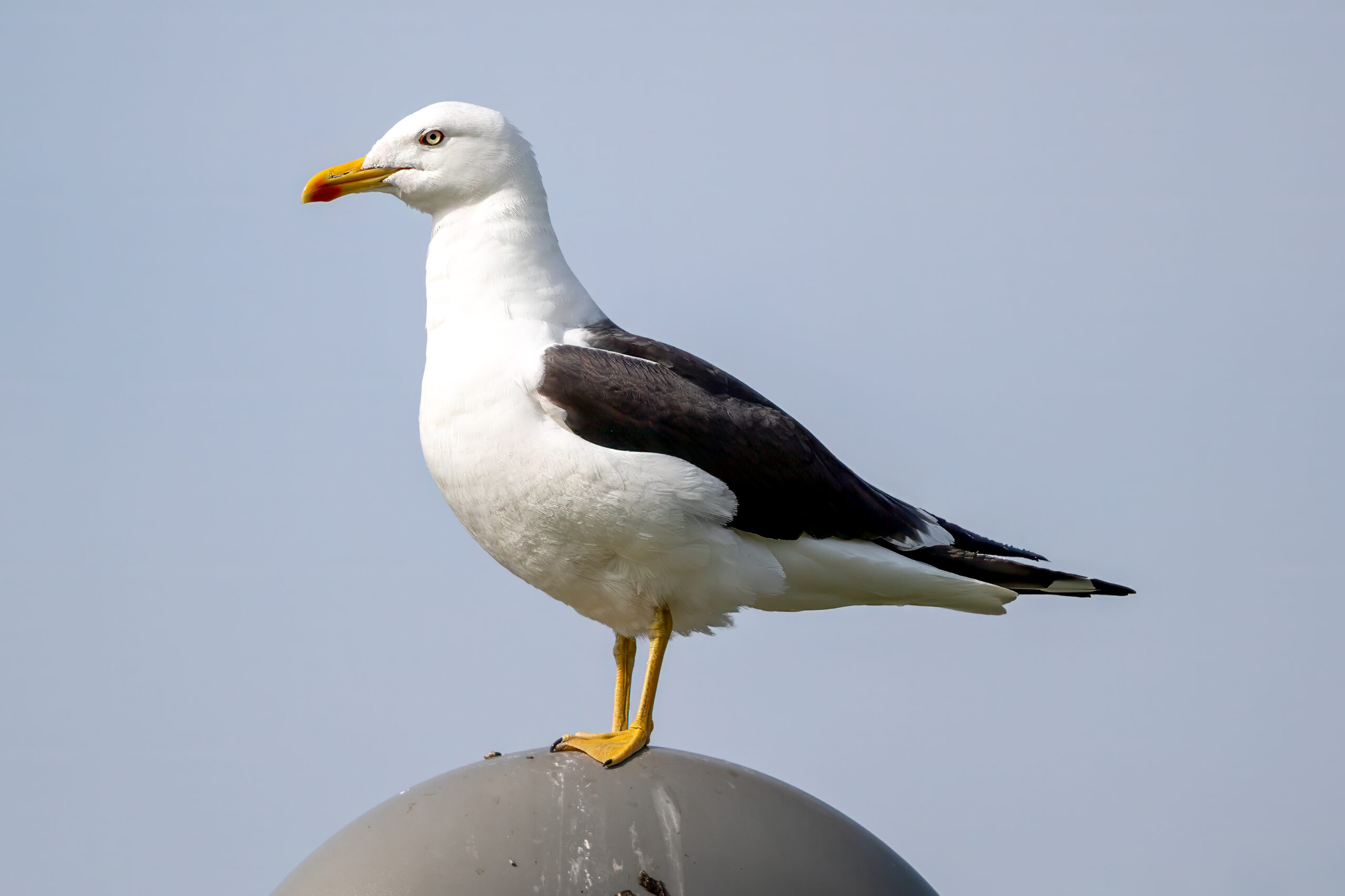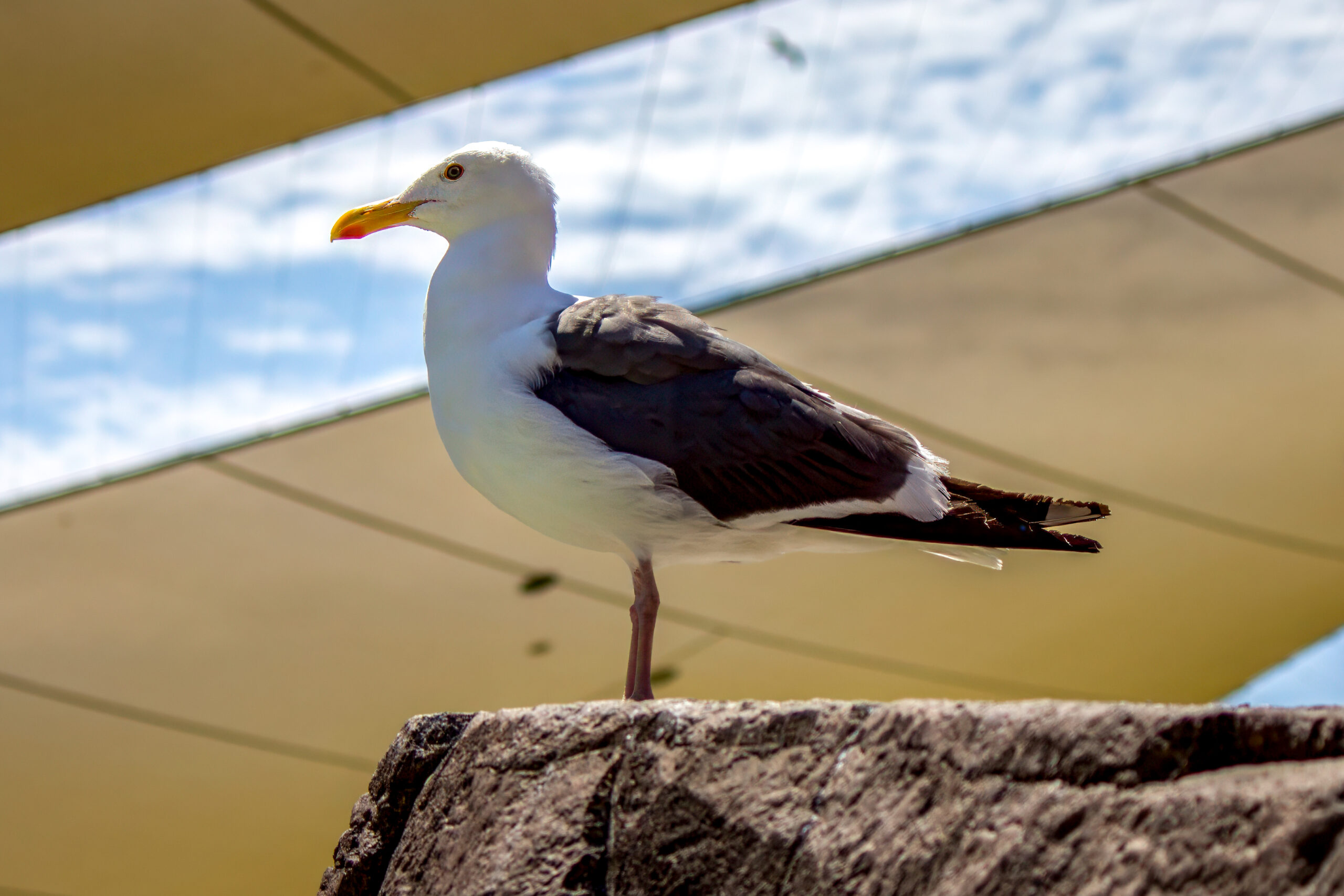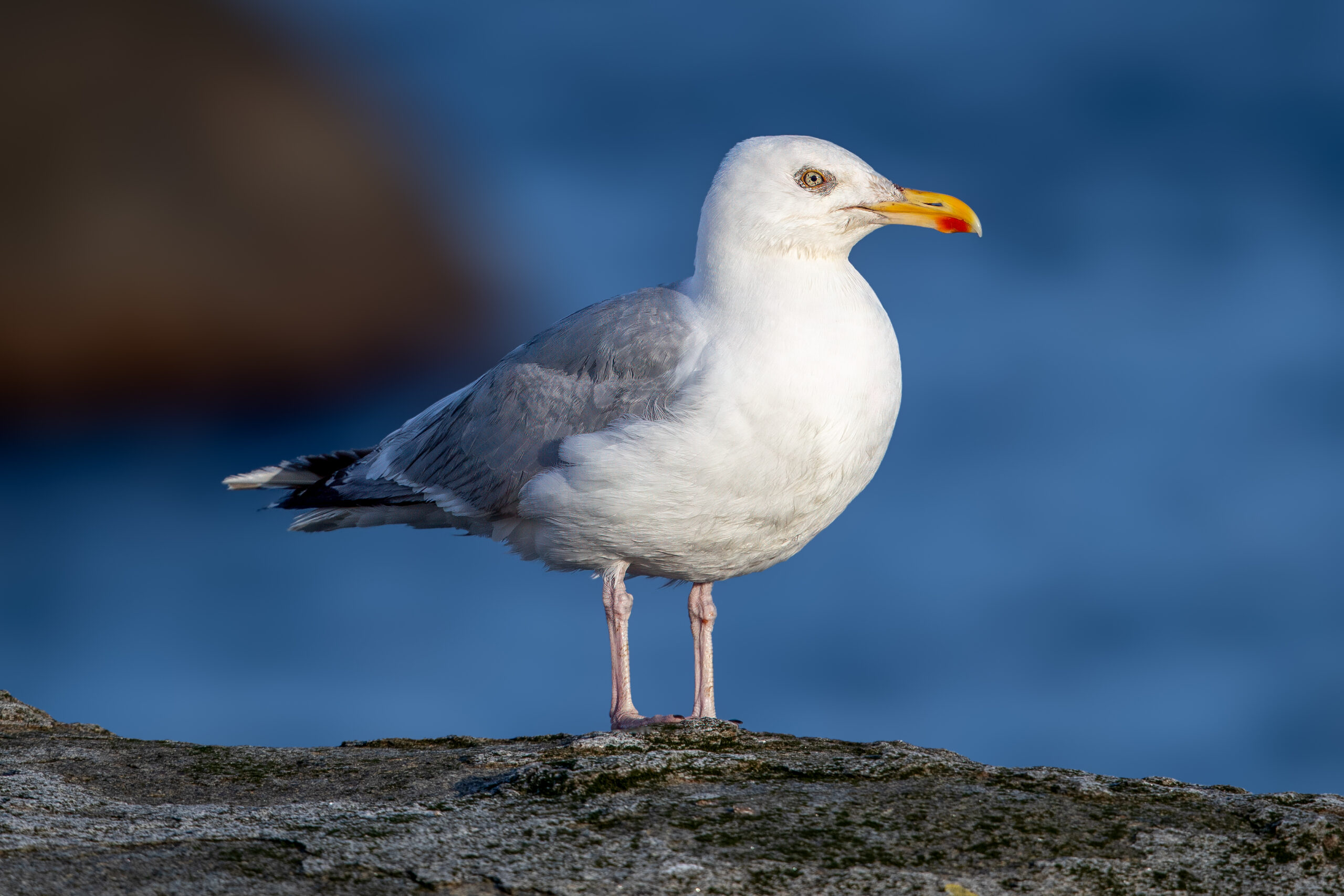Description
Heermann’s gull (Larus heermanni) is a medium-sized gull species native to the west coast of North America, primarily found from central California, USA, down to northwestern Mexico. They are known for their distinctive appearance, with adults having an all grey body and a clear white head in the breeding season. They have a more speckled head during the non-breeding season. The bill is bright red with a black tip. They typically measure about 45-50 cm (18 to 20 inches) in length with a wingspan of approximately 106 cm (42 inches). As the only species of gull with an all grey body within its range, it is easy to distinguish it from other gulls.
Diet & habitat
Heermann’s gulls are commonly found along coastlines, preferring sandy beaches, estuaries, and lagoons. They have a varied diet, mainly consisting of small fish, squid, and crustaceans. They are known for their opportunistic feeding behavior, often following brown pelicans and stealing their prey. Additionally, they scavenge for food and may consume human food waste when available.
Nesting
The breeding season for Heermann’s gull usually starts in late winter to early spring. Around 90% of all Heermann’s gulls breed on the Mexican island of Isla Rasa, on the east coast of Baja California. They typically nest in colonies, building nests on the ground with vegetation and feathers. The female lays 2 to 3 eggs, and both parents share incubation duties, which lasts about a month. After hatching, both parents are involved in feeding the chicks. Fledging occurs approximately five weeks after hatching.
Status
With such a large portion of Heermann’s gulls breeding on the same location, the total population is quite vulnerable. The breeding site of Isla Rasa is well-managed and monitored by scientists, discouraging any form of human disturbance. The species is threatened by climate change, as higher sea temperatures makes it harder find enough food to feed chicks during breeding season. Pollution is also a source of concern for the species. It is listed near threatened on the IUCN Red List.







